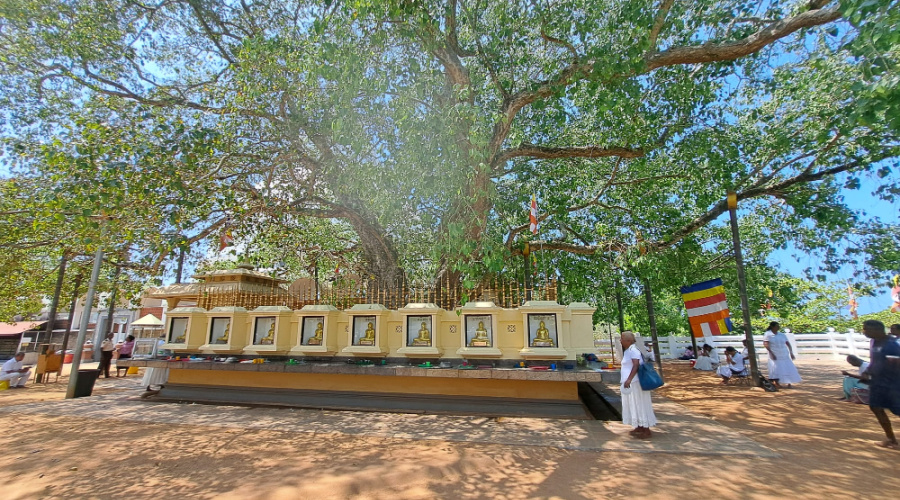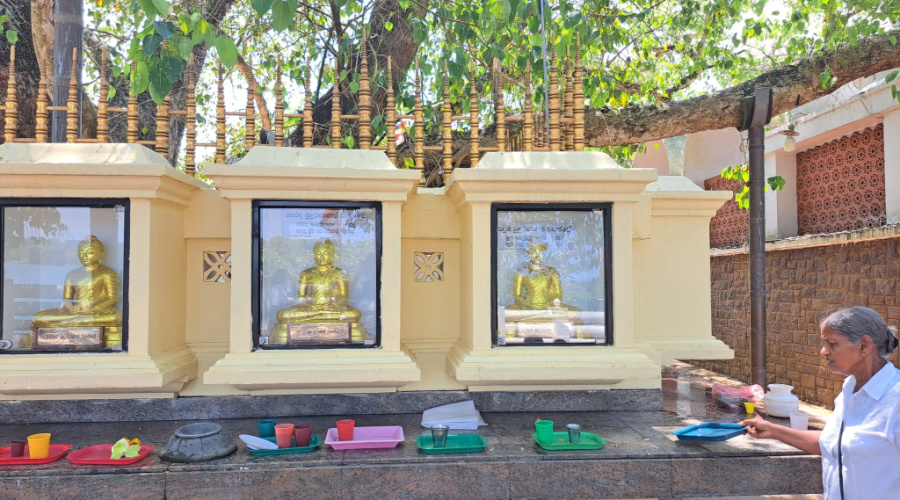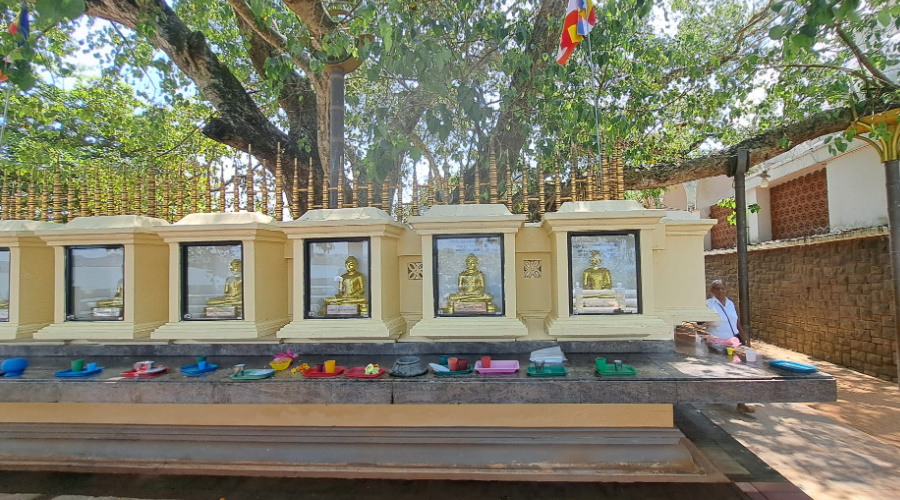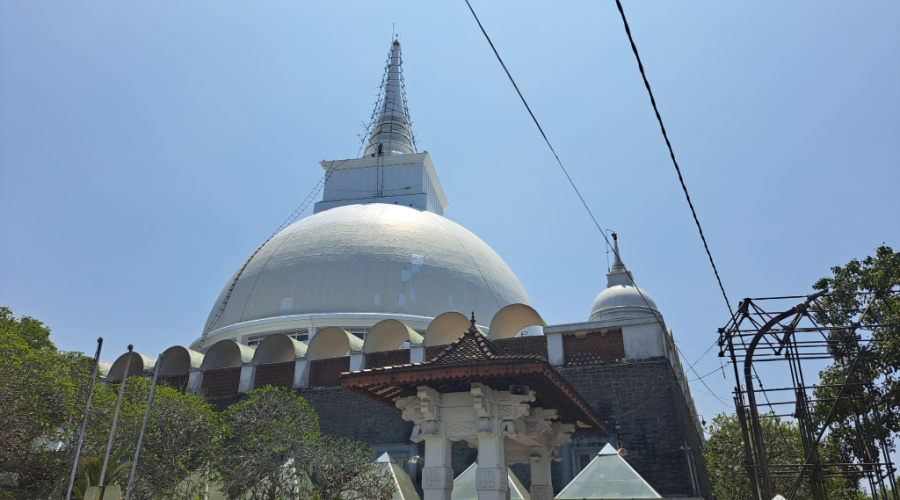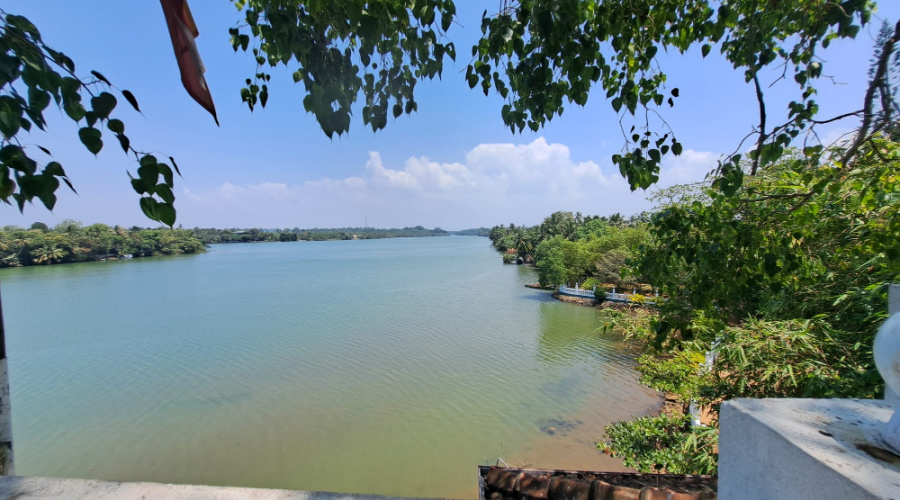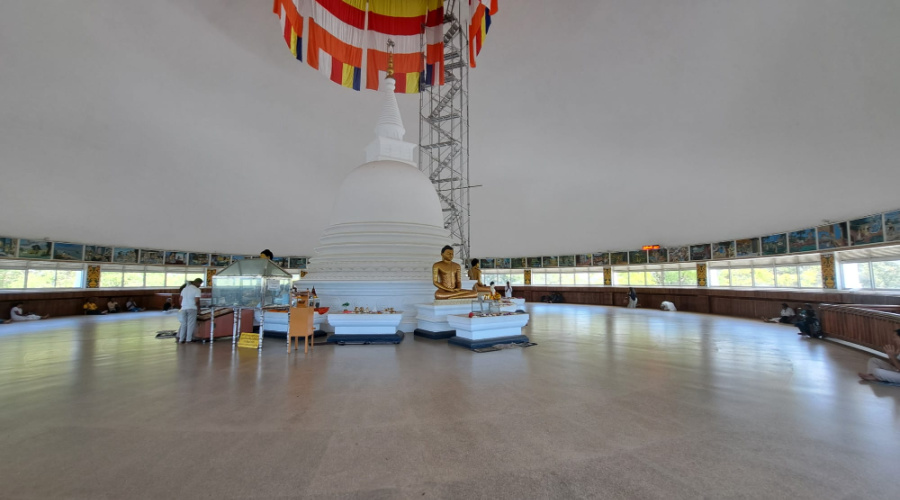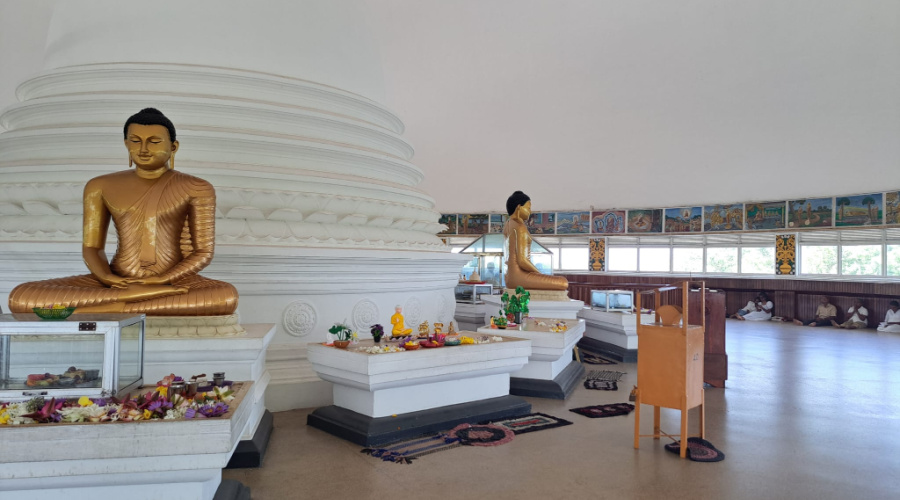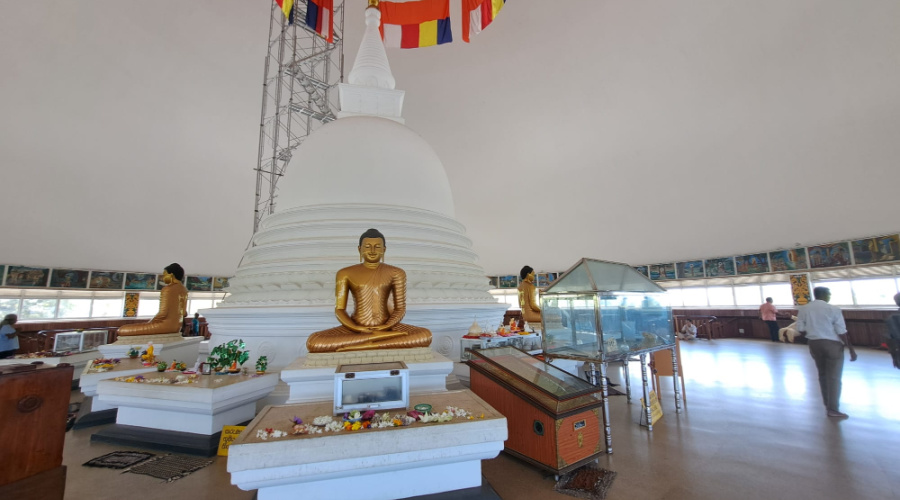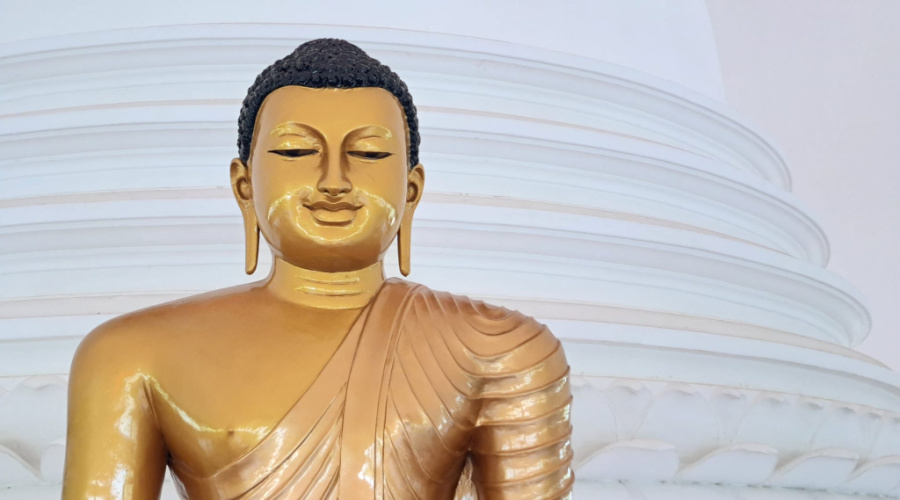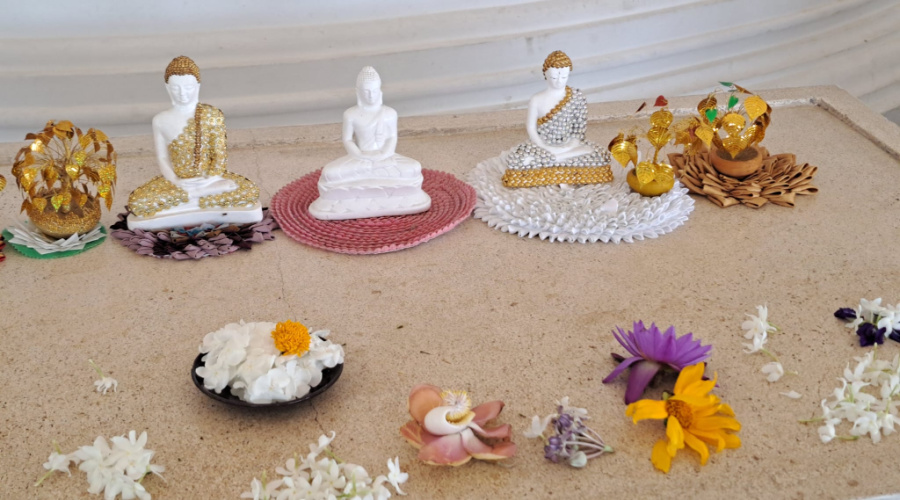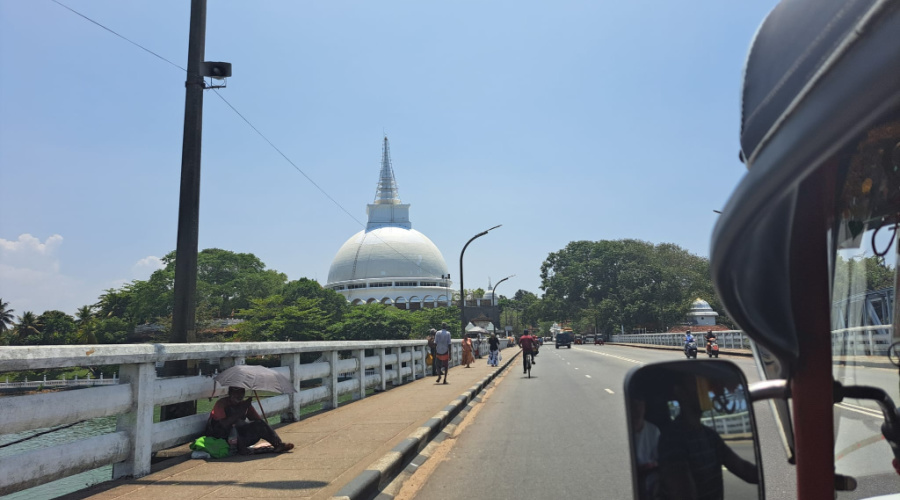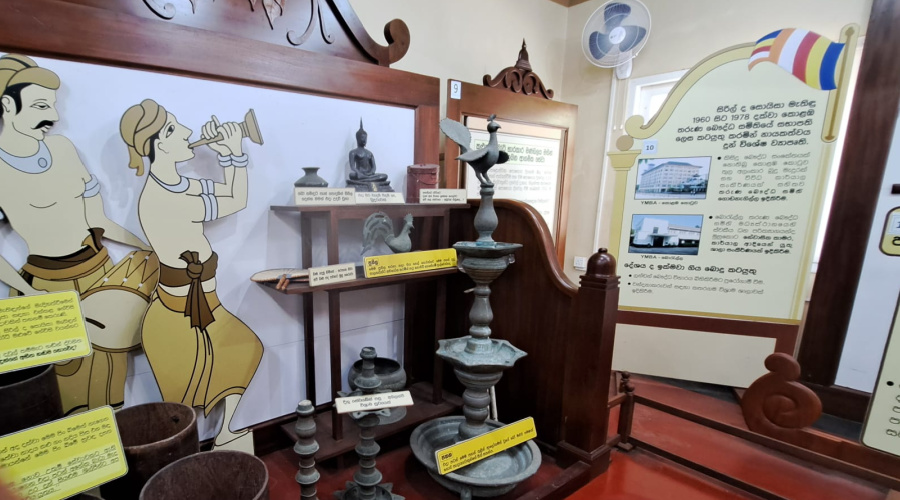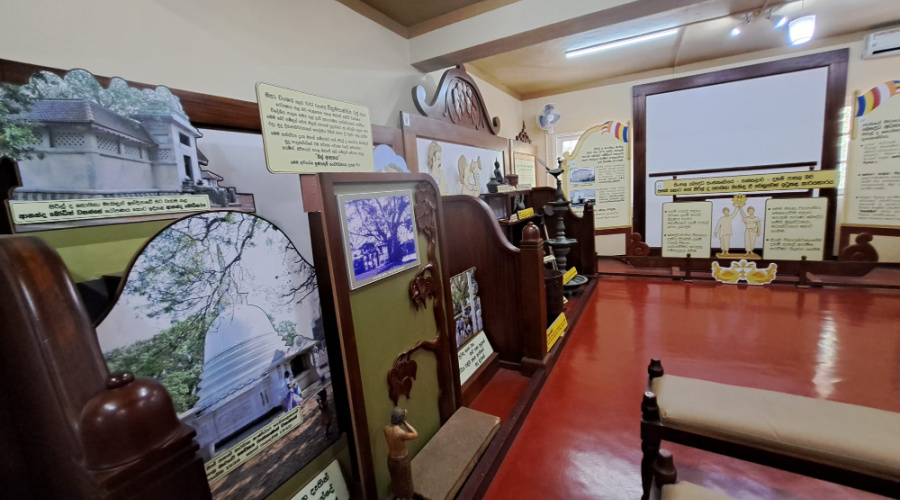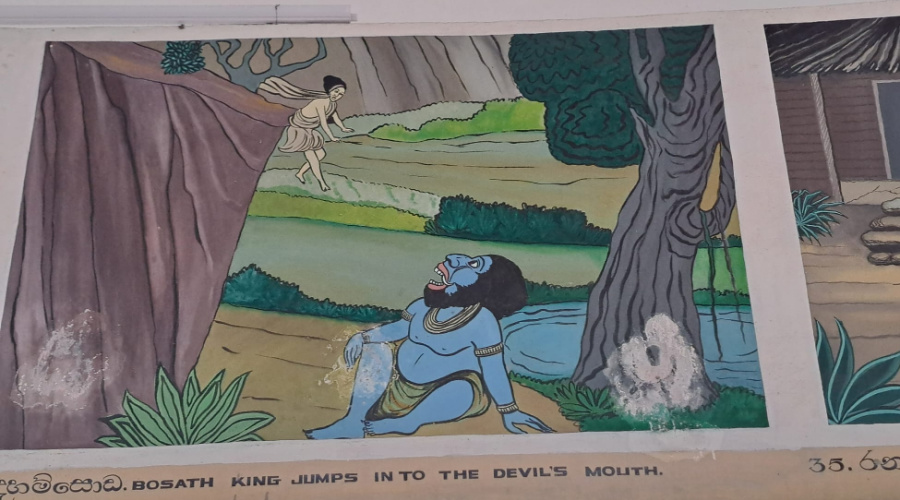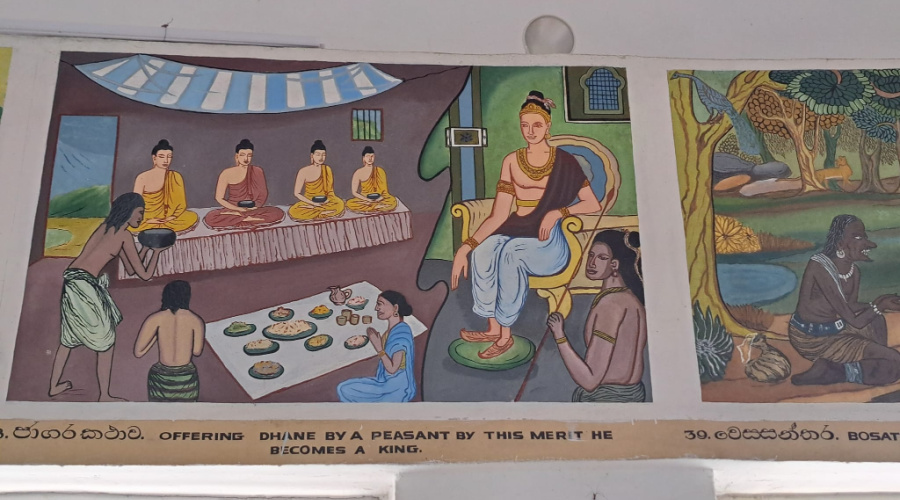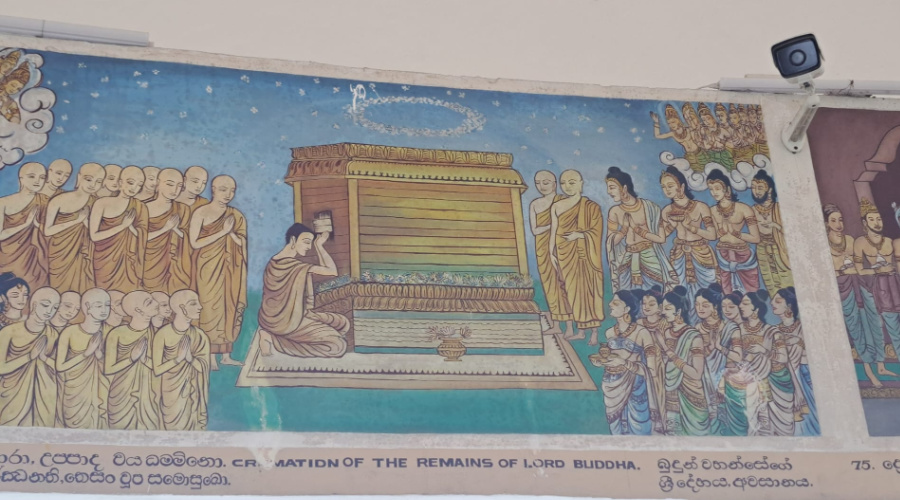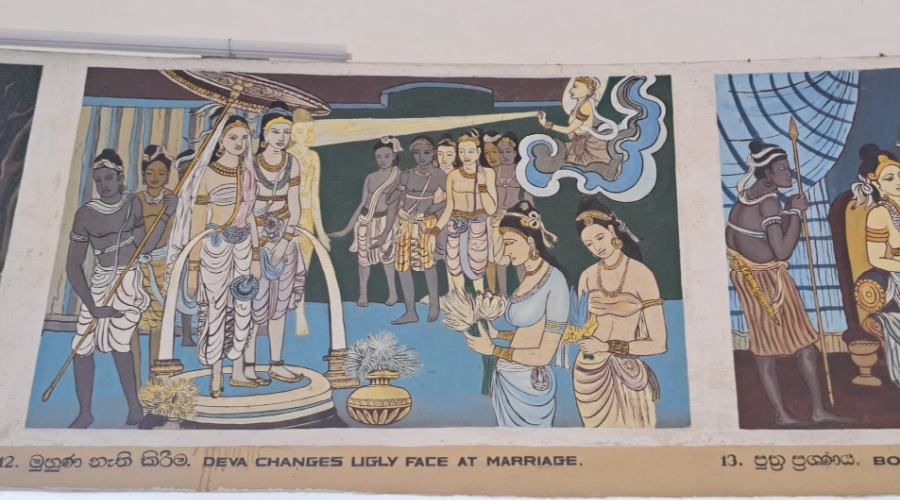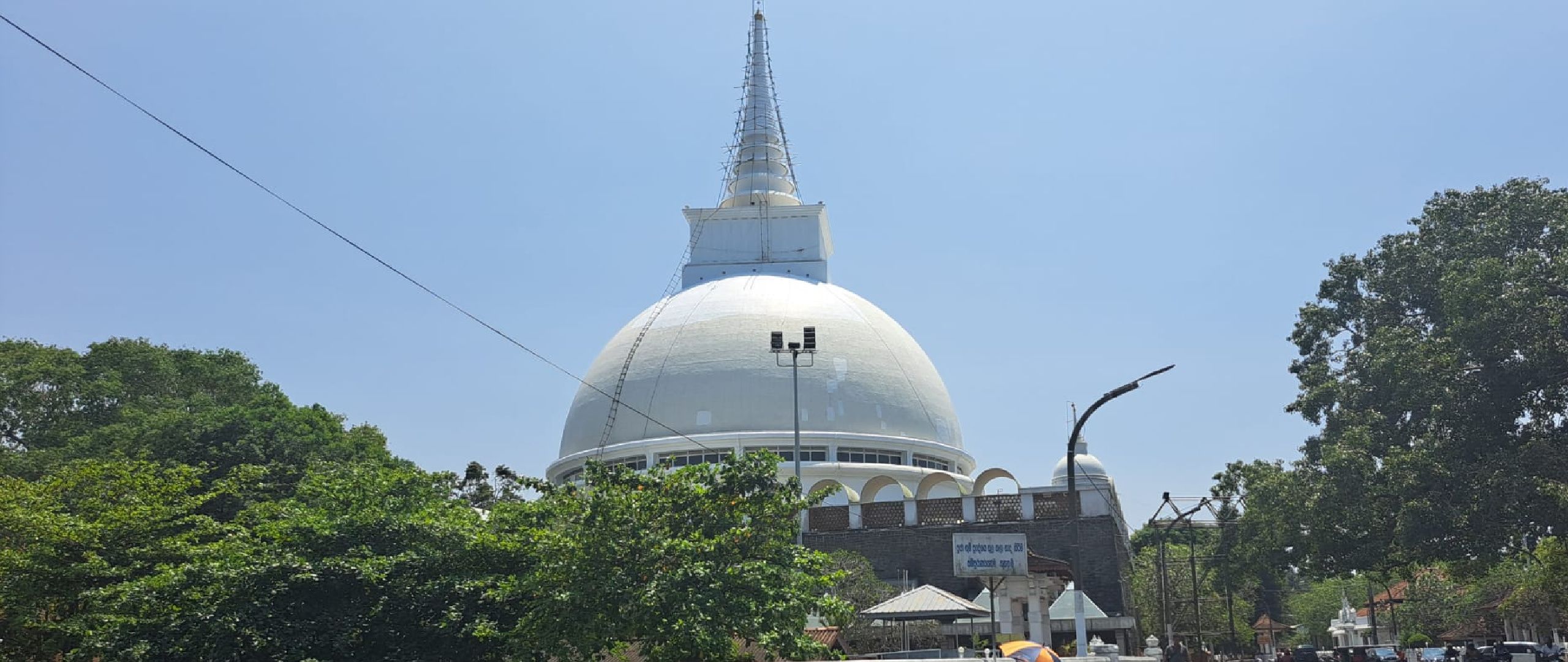Kalutara Bodhiya is a Bodhi tree located in Kalutara 10 kilometers from Maggona Boutique Cottages.
The tree is located on the main Galle Colombo road, on the side of the Kalu River, just south of the city of Kalutara. It is believed to be one of the 32 saplings of the Jaya Sri Maha Bodhi in Anuradhapura. Near this tree is the Buddhist temple, Kalutara Viharaya and a modern stupa, Kalutara Chaitya. These two monuments are located near this sacred fig, the Bodhi Tree. One of the most revered religious sites in Sri Lanka, hundreds of Buddhists and foreign tourists visit this religious site daily.
History Kalutara Bodhiya
Kalutara Bodhiya is an ancient Bodhi tree identified as one of the 32 seedlings of Jaya Sri Maha Bodhi that was planted during the reign of King Devanampiyatissa in the second BC. According to the ancient chronicle Sinhala Bodhiwamsa, 32 seedlings of sacred figs sprouted from Jaya Sri Maha Bodhi were planted in different parts of the country as instructed by Arahant Mahinda Thera . The chronicle further states that this Bodhi tree remained intact until the fifteenth AD. However, it is said that the Buddhist public began to regard this place as a sacred site after a Pandyan prince named Wickrema Pandya planted a Bodhi tree at the Pahala Maluwa of the Kalutara Bodhi grounds in 1042 AD. Prince Wickrema Pandya served as viceroy in Kalutara during that period. After the Portuguese took control of the Maritime Provinces of Sri Lanka in the sixteenth century, the Kalutara Bodhiya site was converted into a fort, probably because of the strategic importance of the site. After the Portuguese and the Dutch, the English came to the area and used this Kalutara Bodhiya site for administrative and military purposes.
During the nineteenth century, when the British government began building railroads in Sri Lanka, it was decided to remove this Bodhi tree because it interfered with the original plans to build the Kalutara railroad bridge. The Buddhist people came out in protest against this. This was successful and it was decided to build the bridge without damaging the Bodhi tree. The modern development of Kalutara Bodhiya as a religious place began when the Kalutara Buddhist Society was founded in 1931. The main objectives of this society were the welfare of Buddhists and the development of Buddhism in the Kalutara area. After Ceylon gained independence from Britain in 1948, the newly appointed government led by Prime Minister Rt. Hon. DS Senanayake, made the decision to use the Kalutara Bodhiya site for religious purposes only.
Kalutara Viharaya
Because of its convenient location along the main road and right next to the Kalutara Viharaya, many people traveling to the south coast of the island often stop at the tree to receive blessings for a safe journey. At the Kalutara Viharaya, the Kalu Ganga River meets the Indian Ocean, making for quite a spectacular sight. Weekends are often filled with devotees performing rituals, offering an insight into the culture and beliefs of the people of Sri Lanka.
Museum Kalutara Viharaya
In the Kalutara Viharaya, you will also find a small museum. Here you can learn more about the famous Bodhi tree, the Viharaya and the history surrounding this sacred place. Admission is free.
